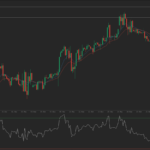 Natural gas rose for a fourth day on Friday and capped its biggest weekly advance since February amid speculations that colder-than-usual weather in the eastern parts of the US will induce higher-than-normal local heating demand, narrowing inventory builds.
Natural gas rose for a fourth day on Friday and capped its biggest weekly advance since February amid speculations that colder-than-usual weather in the eastern parts of the US will induce higher-than-normal local heating demand, narrowing inventory builds.
Natural gas for delivery in December added 1.20% on Friday to settle the week 4.7% higher at $3.873 per million British thermal units, the biggest advance since February. Prices ranged within a weekly range of an 11-month low of $3.620 touched on Tuesday and Fridays high of $3.955. The power-station fuel slid 6% in October, its first monthly decline since July.
Natural gas rallied throughout the week despite a slightly larger-than-expected build in US gas stockpiles during the week ended October 24th. The Energy Information Administration reported on Thursday that US natural gas inventories rose by 87 billion cubic feet last week, sharply exceeding the five-year average increase of 59 bcf and the 45-bcf gain during the comparable period a year ago. Analysts had projected an 85-bcf jump.
Total gas held in US storage stood at 3.480 trillion cubic feet, narrowing the deficit to the five-year average to 8.2%, compared to 9.1% a week earlier. Inventories were 7.8% below the 3.774 trillion cubic feet of gas held in storage a year ago.
Cold East
Nevertheless, the market rallied on weather data as about 49 percent of U.S. households use gas for heating, led by the Midwest and then Northeast, according to the EIA.
NatGasWeather.com reported on Friday that natural gas demand in the US through late next week will be moderate, and locally high, compared to normal, with a neutral weather trend for the seven days between November 7-13.
A cold Canadian weather system tracked across the Midwest on Friday into the eastern US and was set to extend even into the Southeast, with many parts of the east-central US poised to see strongest heating demand so far this season. Cooler weather and showers were expected to dominate over the West Coast in the next days, as Pacific storms head inland.
Early next week, mild temperatures will return to the central and southern US. Fast moving Canadian weather systems will enter the Midwest and northern US late next week, probably carrying close to or below-freeze temperatures, NatGasWeather.com reported. However, their area of effect will be contained and the lower two-thirds of the country will remain mild with highs in the 60s and 70s. Readings across the West Coast are expected to remain cooler.
Despite the cold snap to the East which pushed the market up this week, it will be hard for prices to go past $4.00 and retain gains, given next week’s forecasts for mild weather across most of the country. The cold front will need to push deep down south in order to reduce the next two weeks’ inventory builds, which have been racing ahead of the rapidly declining average net injections.
Temperatures
According to AccuWeather.com, temperatures in New York on November 4th will range between 54 and 64 degrees, above the average 45-58, before dropping to the below-normal 43-49 four days later. Chicago will be mostly seasonal at 40-53 degrees on November 4th, followed by a drop to as much as 23 degrees on November 11th, 14 below usual.
Down South, Houston will see readings max out at 82 degrees on November 4th, 6 above normal, before they moderate to the slightly-below-seasonal 73-74 degrees during the November 6-9 span. On the West Coast, Los Angeles will reach as much as 82 degrees on November 5th, 7 above the average, and is expected to retain above-seasonal levels though November 9th, with highs falling to 68-74 degrees in the next three days.
Pivot points
According to Binary Tribune’s daily analysis for Monday, December natural gas futures’ central pivot point stands at $3.888. In case the contract penetrates the first resistance level at $3.940 per million British thermal units, it will encounter next resistance at $4.008. If breached, upside movement may attempt to advance to $4.060 per mBtu.
If the energy source drops below its first support level at $3.820 per mBtu, it will next see support at $3.768. If the second key support zone is breached, the power-station fuel’s downward movement may extend to $3.700 per mBtu.
In weekly terms, the central pivot point is at $3.816. The three key resistance levels are as follows: R1 – $4.012, R2 – $4.151, R3 – $4.347. The three key support levels are: S1 – $3.677, S2 – $3.481, S3 – $3.342.





